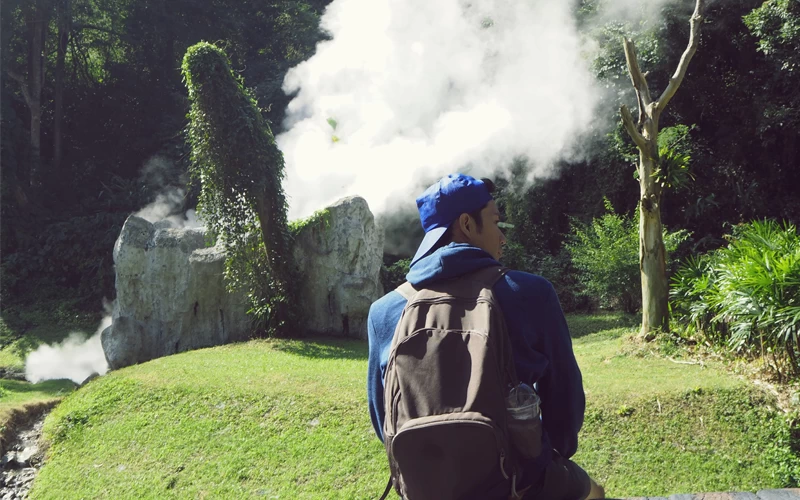Luneta Park, also known as Rizal Park, is one of the most iconic landmarks in Manila, Philippines. Its historical significance and vast green spaces make it a popular destination for both locals and foreign tourists. It stands as one of the largest green areas in Asia, featuring decorative lawns, dancing fountains, meticulously tended flower beds, and paved pathways.
Beyond its historical significance, Luneta Park is also renowned for its picturesque gardens, and serene atmosphere amidst the bustling city. It provides a tranquil retreat for urban dwellers and serves as a venue for various recreational activities, cultural events, and gatherings.
However, with so many attractions competing for your time in Manila, you might wonder if a visit to Luneta Park is worth it. Let’s explore the various aspects of this renowned park to help you decide whether to include it in your itinerary.
The park is divided into three distinct sections:
- Northeastern Section: Covering 16 hectares (40 acres), this area is designated as the National Museum Complex, housing the Agrifina Circle, as well as the National Museum of Natural History and the National Museum of Anthropology.
- Central Section: Stretching across 22 hectares (54 acres) south of Maria Orosa Street, this segment comprises the main park area, extending to Roxas Boulevard. Here, tourists can find historical landmarks such as the Rizal Monument, along with attractions like the Open-Air Auditorium, Independence Flagpole, and Central Musical and Dancing Fountain.
- Southwestern Section: Encompassing the Burnham Green, a 10-hectare (25-acre) open field, as well as the Quirino Grandstand and the Manila Ocean Park along the Manila Bay waterfront.
Why is Luneta Park Famous?
Luneta Park holds a special place in Philippine history as the site where Dr. Jose Rizal, the national hero, was executed by firing squad on December 30, 1896. His martyrdom sparked the flames of the Philippine Revolution against Spanish colonial rule. A monument – 12.7-meter-tall granite monument, constructed between 1908 and 1913 – dedicated to Rizal stands tall at the heart of the park, serving as a poignant reminder of his sacrifice and the nation’s struggle for independence.

Is Luneta Park Free?
Yes, entrance to Luneta Park is free for all. You can stroll through its grounds, admire the monuments and sculptures, or simply relax under the shade of its trees without spending a single peso. However, there may be fees for specific attractions or activities within the park, such as the Light and Sound Museum or renting bicycles to explore the area.
Is Rizal Park Worth Visiting?
For me, absolutely! Rizal Park offers not only a glimpse into Philippine history but also a serene escape from the hustle and bustle of Manila. The park’s well-manicured lawns, fountains, and ponds provide a peaceful ambiance ideal for leisurely walks or quiet contemplation. Whether you’re a history enthusiast, a nature lover, or simply seeking a respite from the city’s chaos, Rizal Park has something to offer everyone.
What Can You See in Luneta Park?
Aside from the Rizal Monument, there are several other attractions worth exploring within Luneta Park. These include:
- Chinese Garden: A tranquil oasis featuring traditional Chinese architecture, ornamental bridges, and lush greenery. A decorative Chinese-style gate, intricately carved with swirling dragons, welcomes you into this enchanting garden, reminiscent of ancient Peking. Alongside the lagoon, designed to mimic a small lake, stand pagodas and gazebos adorned with red pillars and green-tiled roofs, adorned with an abundance of mythical figures.
- Japanese Garden: Modelled after a traditional Japanese landscape, complete with bonsai trees, lanterns, and a koi pond. The gardens were constructed with the aim of fostering friendship between Japan and the Philippines. Inside, visitors can enjoy leisurely strolls around the Japanese-style gardens, lagoon, and bridge, creating a pleasant and serene atmosphere.
- Orchidarium and Butterfly Pavilion: Established in 1994, the Orchidarium was transformed from a former parking lot into a one-hectare park resembling a rainforest. It features a diverse array of orchid species and butterflies, showcasing the rich biodiversity of the Philippines. The pavilion is a popular choice for wedding ceremonies and educational trips.
- Open-Air Auditorium: Designed by the National Artist for Architecture, Leandro Locsin, the park offers free performances to the general public courtesy of the National Parks Development Committee, Department of Tourism, and People’s Television. Free entertainment is also available in other areas of the park. The featured shows encompass a variety of performances, including dance, theatre, and musical performances by both local and foreign artists. Moreover, the park serves as the venue for Cinema in the Open-Air, where critically acclaimed films are screened free of charge.
- Children’s Playground: Renovated in 2011, it is equipped with slides, swings, and other play structures, perfect for families with young children.
- Noli me Tangere Garden. The park includes the Heidelberg fountain, where Rizal frequented during his time in Germany. Donated as a symbol of Filipino-German friendship, the fountain holds historical significance. Additionally, visitors can find the bust of Ferdinand Blumentritt within the garden.
Near Luneta Park, there are several attractions worth exploring:
- Intramuros: A historic walled city that dates back to the Spanish colonial period, featuring well-preserved architecture, museums, and landmarks such as Fort Santiago and San Agustin Church.
- Manila Ocean Park: Located adjacent to Luneta Park, this oceanarium offers a fascinating glimpse into marine life through its underwater tunnels, interactive exhibits, and live shows.
- National Museum of Fine Arts: Home to a vast collection of Filipino artworks, including paintings, sculptures, and other artifacts, providing insight into the country’s rich cultural heritage.
- National Museum of Anthropology: Situated within Rizal Park, this museum showcases ethnographic and archaeological exhibits that delve into the diverse cultures and traditions of the Philippines.
- Manila Baywalk: A scenic promenade along the shores of Manila Bay, offering stunning sunset views, seafood restaurants, and a vibrant atmosphere for leisurely strolls or dining by the sea.
- Quirino Grandstand: Located at the southern end of Luneta Park, this grandstand is known for hosting significant events and gatherings, including political rallies, parades, and cultural performances.

While Luneta Park may not offer the thrill of amusement parks or the glamour of shopping malls, its historical significance, tranquil ambiance, and natural beauty make it a worthwhile stop for anyone exploring Manila. Someone who’s history buff, a nature enthusiast, or simply seeking a peaceful retreat, a trip to Luneta Park promises a memorable encounter that captures the essence of the Philippines’ past and present. So, is it worth visiting Luneta Park or giving it a miss? The answer is unequivocal: pay a visit and experience its timeless charm to the fullest.
Plan for your unforgettable journey to Luneta Park with Mabuhay Travel. Communicate with our trusted Filipino Travel specialist. Let us guide you through the rich history, serene ambiance, and captivating attractions of this iconic destination. Book your trip today and immerse yourself in the essence of Manila’s past and present. Don’t miss out on this extraordinary experience – contact Mabuhay Travel now and start planning your adventure!



